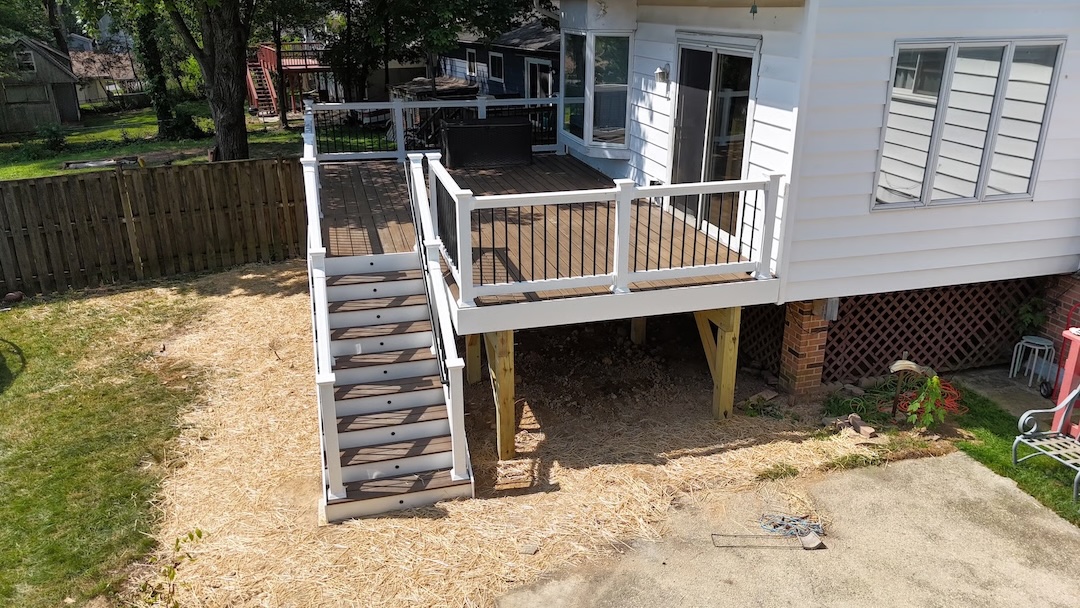The Best Decking Materials for Durability and Style
Explore the most durable and stylish decking materials—from hardwoods to composite. Compare costs, upkeep, aesthetics, and longevity to choose the right fit.

Building a Deck That Lasts—and Looks Good Doing It

When it comes to designing a deck that stands the test of time, your choice of material is everything. Whether you're replacing an aging structure or building new from the ground up, selecting the right decking surface means balancing beauty, durability, budget, and maintenance.
From tropical hardwoods and pressure-treated pine to high-performance composites and PVC boards, today’s options offer more variety than ever. This guide compares the most popular decking materials so you can make a confident decision based on your space, lifestyle, and long-term goals.
Pressure-Treated Wood: Budget-Friendly but High Maintenance
Pressure-treated pine remains the most common entry point for deck building due to its affordability and wide availability. Treated with preservatives to resist insects and rot, it’s relatively easy to work with and accepts stain or paint well.
However, pressure-treated wood comes with a trade-off: maintenance. It requires regular sealing or staining every 1–2 years to prevent warping, splintering, and color fading. Over time, even well-maintained boards can crack or cup due to exposure.
Best For:
- Budget-conscious builds
- Short-term or temporary solutions
- DIYers comfortable with ongoing upkeep
Cedar and Redwood: Naturally Resistant and Warm in Tone
Cedar and redwood are softwoods that naturally resist insects and decay without chemical treatment. Their warm color tones and fine grain patterns make them favorites for rustic and craftsman-style homes.
They require less maintenance than pressure-treated pine, but still benefit from annual cleaning and resealing. Without care, they will weather to a soft gray patina, which some homeowners appreciate.
Best For:
- Natural wood lovers
- Mid-budget projects
- Clients who enjoy periodic hands-on maintenance
Tropical Hardwoods: Premium Strength and Luxury Aesthetics
Hardwoods like Ipe, Cumaru, and Tigerwood are among the most durable natural decking options available. Dense and oily by nature, these species resist insects, rot, moisture, and even fire. Ipe, in particular, can last 40+ years with proper maintenance.
The trade-off is cost and labor. These woods are extremely heavy, hard to cut, and require pre-drilling. They also demand regular oiling to preserve their rich color; otherwise, they’ll weather to silver.
Best For:
- High-end custom decks
- Coastal or humid climates
- Long-term investment properties
Composite Decking: Low Maintenance and High Performance

Composite decking is made from a blend of recycled wood fibers and plastic, resulting in boards that mimic the look of wood but require far less upkeep. Available in a wide range of colors, grains, and profiles, composite boards won’t splinter, warp, or require staining.
Most quality brands (like Trex, TimberTech, and Fiberon) offer 25–50 year warranties and are engineered to resist fading, mold, and moisture. While the upfront cost is higher than wood, the lifetime value is unmatched for many homeowners.
Best For:
- Busy households
- Low-maintenance lifestyles
- Homes with kids or pets
PVC Decking: 100% Synthetic and Super Durable

PVC (polyvinyl chloride) decking is a step beyond composite—offering an all-plastic board that resists virtually everything: moisture, mold, staining, insects, and UV rays. It’s incredibly lightweight and won’t absorb water, making it a top choice for docks, pool decks, and high-humidity areas.
PVC boards tend to feel cooler underfoot than some composites and don’t require sealing or staining. They also come in sleek, modern finishes that appeal to design-forward clients.
Best For:
- Poolside decks or docks
- Wet or coastal regions
- Homeowners who want the lowest maintenance possible
Aluminum Decking: Industrial-Strength and Fire-Resistant
Aluminum isn’t a common residential deck material, but it's gaining traction for specialty applications. Lightweight, non-combustible, rust-proof, and recyclable, aluminum boards last decades with zero maintenance. They’re often used in commercial settings or homes with strict fire codes.
These boards have a sleek, metallic look that may not suit every aesthetic, but for some ultramodern or utilitarian spaces, they’re ideal.
Best For:
- Fire-prone zones
- Commercial or multifamily decks
- Clients prioritizing longevity over traditional looks
How to Choose the Right Material for Your Deck
When evaluating options, ask yourself:
- What’s my maintenance threshold? If you prefer to enjoy your deck rather than work on it, composites or PVC are your friend.
- How long do I plan to stay in the home? Short-term ownership may justify natural wood. Long-term builds benefit from lower-maintenance options.
- What’s my climate? High humidity, salty air, or extreme heat can accelerate wear. Choose materials designed to handle your region.
- What’s my style? Consider color, grain, and how the deck connects visually with your home and landscape.
- What’s my budget—not just now, but over time? Factor in the cost of sealants, staining, replacement boards, and cleaning.
Build for the Long Run
The best decking material isn’t just what looks good today—it’s what holds up year after year with minimal stress. Whether you gravitate toward the warmth of natural wood or the resilience of modern composites, the right choice depends on your goals, maintenance tolerance, and environment.
At Upgryd, we help clients choose decking that reflects their vision and simplifies their life. From coastal retreats to family gathering hubs, we design surfaces that look great, feel great, and last long after the first season.



